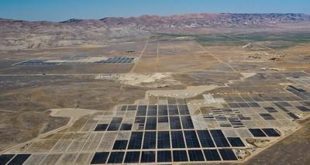Silicon wafers coated in a protein extracted from spinach produce an electric current that is nearly 2-1/2 times higher than the previously best level reported for so-called biohybrid solar cells.
The protein, called photosystem 1 (PS1), converts sunlight into electrical energy. For the last few decades, researchers have learned how to extract and harness PS1 to create solar cells, but the amount of power these cells produce is a trickle compared to conventional photovoltaic cells.
The new approach pioneered by researchers at Vanderbilt University involves tailoring the electrical properties of silicon to fit those of the PS1 molecule.
read more here


 Alternative Energy HQ solar power for homes, wind energy, and bio fuel issues
Alternative Energy HQ solar power for homes, wind energy, and bio fuel issues






